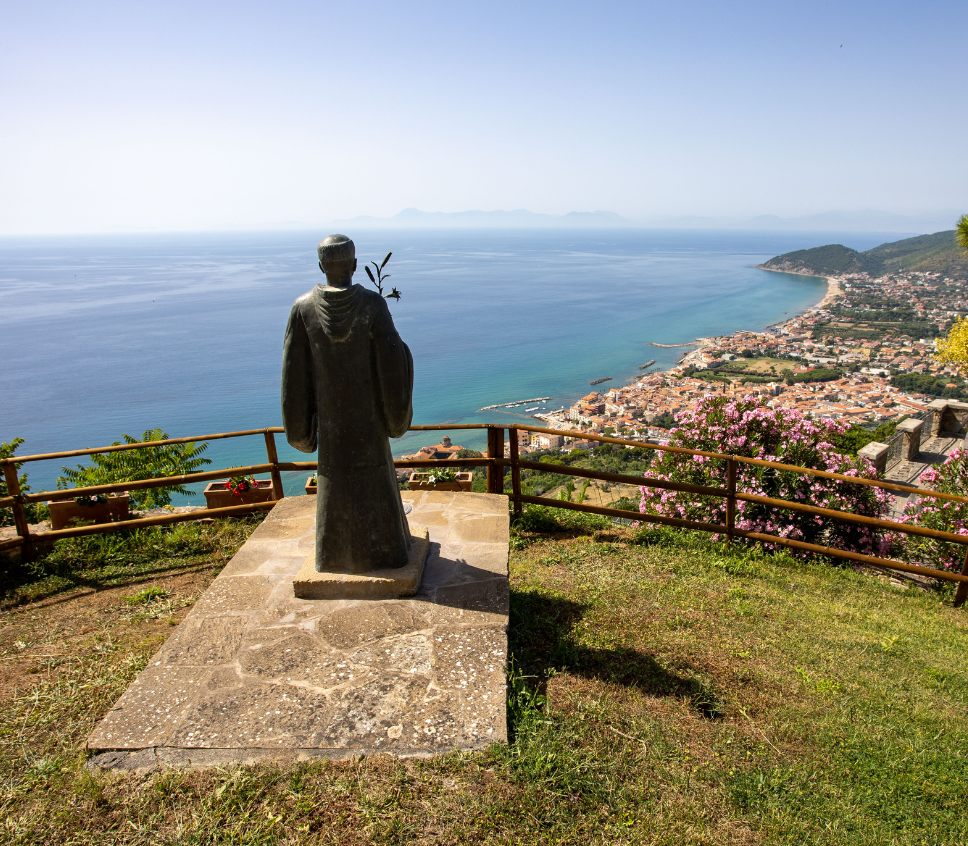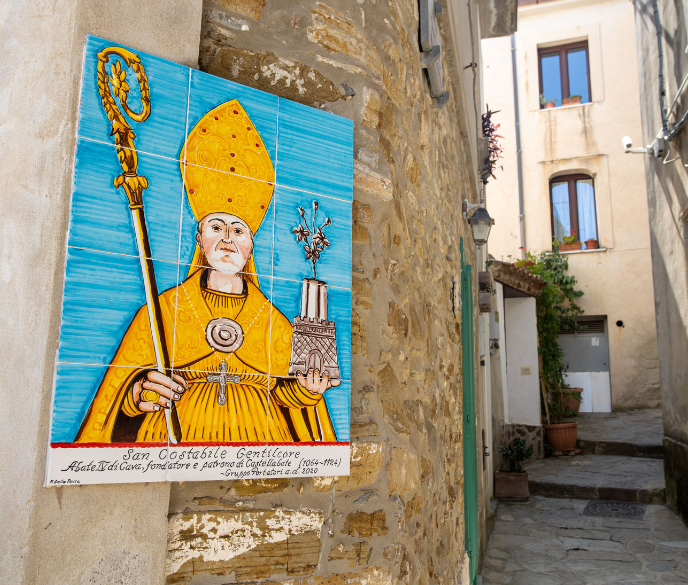CAR
Via the A1/E45 motorway, exit Battipaglia. Take SS 18 Tirrena Inferiore and SP15/SP15a towards Strada Provinciale Adolfo Cilento/SP61 in Castellabate
Via Gioacchino Murat, 84048, Castellabate (SA)

Via the A1/E45 motorway, exit Battipaglia. Take SS 18 Tirrena Inferiore and SP15/SP15a towards Strada Provinciale Adolfo Cilento/SP61 in Castellabate
From Salerno take bus line 034 'San Marco di Castellabate' to Asilo Matarazzo, then proceed on foot
Take the line to Agropoli-Castellabate. Proceed with bus line 099 stopping at Asilo Matarazzo. Proceed on foot to the belvedere
Costabile Gentilcose was a Lucanian monk, born to a humble family in Tresino, a hamlet of Castellabate, between 1069 and 1070. While still an adolescent he entered the Benedictine monastery of the Holy Trinity in Cava and his education and spiritual formation was entrusted to St. Leo. From January 1119, with the title of “Abbas constitutus”, he flanked St. Peter Pappacarbone in the leadership of the abbey of Cava. In October 1122, St. Peter handed over the pastoral staff to him, appointing him his successor.
With the authorisation of duke William, on 10 October 1123 he began the construction of the Castle of the Angel known as “Castrum Abatis” in Cilento, later to become “Castellabate” for the defence of the local population from the incursions of the African Saracens who, in 1113, had devastated and plundered the Cilento territory. After his death, the fortification works were continued by his successor, the Benedictine blessed Simeon.
Located at the entrance to the small village, the belvedere is now the entry point to the characteristic village. This small square has a beautiful view of the hamlets below lapped by the sea and is dominated by the Abbot's Castle.




